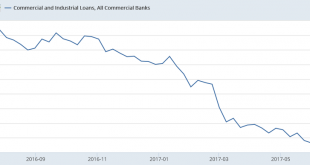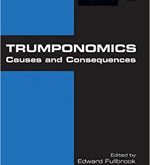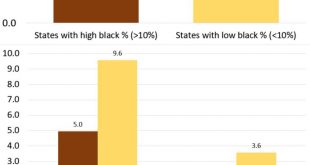from C. P. Chandrasekhar The big news late in June 2017 was that the Serious Fraud Office (SFO) in the UK had charged four former senior executives of Barclays bank, including its former chief executive, John Varley, with fraud committed almost a decade earlier, during the global financial crisis of 2008. This is the first chief of an institution embroiled in the 2008 financial crisis who faces criminal (as opposed to civil) proceedings. How long the investigation will take and what the...
Read More »Credit check, Venezuela, US petro reserve sale, Spicer resigns
No relief here. Just a question of what this is reflecting: Someone robbing the cookie jar? No comment. Just hoping it doesn’t happen: Wheels coming off:
Read More »Why testing axioms is necessary in economics
from Lars Syll Of course the more immediate target of Davidson in his formulation of the argument in the early 1980s was not Samuelson, but Lucas and Sargent and their rational expectations hypothesis … This was indeed the period when new classical economics was riding at its highest point of prestige, with Lucas and Sargent and their rational expectations assumption apparently sweeping the boards of any sort of Keynesian theories. Curiously, they did not seem to care whether the...
Read More »Piketty et al. and Trumpism
from Edward Fullbrook It seems generally agreed that populism tends to rise up after a prolonged period in which governing elites have blocked from public discussion the declining economic welfare of a significant proportion of the population. These declines take two forms, usually simultaneously and interdependently: A decline of income and wealth in absolute terms and/or relative to the elites and their agents. A decline in key characteristics of employment through time (quality,...
Read More »Economics as religion?
from David Ruccio Mainstream economists have been taking quite a beating in recent years. They failed, in the first instance, with respect to the spectacular crash of 2007-08. Not only did they not predict the crash, they didn’t even include the possibility of such an event in their models. Nor, of course, did they have much to offer in terms of explanations of why it occurred or appropriate policies once it did happen. More recently, the advice of mainstream economists has been...
Read More »Open thread July 21, 2017
Police Shootings by State v. Percent of the Population that is Black
After my recent post on police shootings I was curious and did some googling on the topic. By coincidence, right about that time Peter Moskos (i.e., Cop in the Hood) wrote this: I looked at the Washington Post data of those shot and killed by police in 2015 and 2016 and broke it down by states with more and fewer African-Americans. States that are more than 10 percent African American include 21 states plus D.C. (198 million people, 18 percent black, 36...
Read More »Adam Smith & the Invisible Hand
from Asad Zaman In response to a comment by David Chester regarding Adam Smith and the Invisible Hand, I am reproducing the section in the paper which deals with this issue. This answers his question about how what is attributed to Adam Smith differs from what he actually said. [Excerpt from the paper: Failures of the Invisible Hand] Section 6: Recent Vintage of the Invisible Hand The main goal of this section is to show that the modern interpretation of the IH is relatively recent. The...
Read More »Philly Fed, Bloomberg consumer comfort index, Housing permits, Jobless claims, Euro comments, Trump comment
Trumped up expectations as reflected in the various surveys continue to fade, and fall in line with the decelerating ‘hard data’: Highlights There finally may be cracks appearing in Philly Fed which has, since the election, been signaling break-out strength for the Mid-Atlantic manufacturing sector. The general conditions index looks solid at 19.5, still very strong though down from 27.6 in June and the least robust result since November. But details — which in this report...
Read More »Are methodological discussions risky?
from Lars Syll Most mainstream economists are reluctant to have a methodological discussion. They usually think it’s too ‘risky.’ Well, maybe it is. But on the other hand, if we’re not prepared to take that risk, economics can’t progress, as Tony Lawson forcefully argues in his Essays on the Nature and State of Modern Economics: Twenty common myths and/or fallacies of modern economics 1. The widely observed crisis of the modern economics discipline turns on problems that originate at the...
Read More » Heterodox
Heterodox







